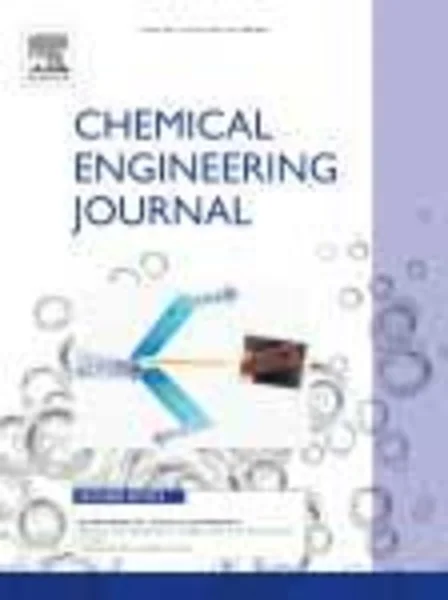-
removal of bromide from water by adsorption on silver-loaded porous carbon spheres to prevent bromate formation
جزئیات بیشتر مقاله- تاریخ ارائه: 1392/01/01
- تاریخ انتشار در تی پی بین: 1392/01/01
- تعداد بازدید: 1109
- تعداد پرسش و پاسخ ها: 0
- شماره تماس دبیرخانه رویداد: -
bromate is a potential toxin that can be formed from bromide during the disinfection of drinking water by ozone. the performance of silver-loaded porous carbon spheres (slpcss) for removing the bromate precursor, bromide (br−), was investigated under a range of conditions. the saturated slpcs were then regenerated and tested to determine reusability. porous carbon spheres (pcss) were also prepared by carbonization of spherical poly(vinylidene chloride) and their ability to remove bromide compared with slpcs. slpcs were more efficient adsorbents than pcs because of the presence of silver and their adsorption capacity reached as high as 1.20 mg/g at 25 °c under the experimental conditions used. the removal of br− by slpcs was determined by batch and rapid small-scale column tests to assess the kinetic and dynamic adsorption behaviors. the equilibrium adsorption data fit well with the langmuir isotherm and the br− adsorption process followed a pseudo-second-order kinetic model. both removal efficiency and adsorption capacity improved with increasing temperature. the feasible range of ph for br− removal was between 4 and 7 and optimal performance was attained at ph 5. the presence of competitive species, such as cl−, i−, no-3, so2-4 and humic acid, resulted in poor br− adsorption, with their impact following the order: i− > so2-4> no-3 > cl−. in the presence of competitive species, the impact of ph was minor, except for the i− anion. regenerated slpcs retained satisfactory performance.
مقالات جدیدترین رویدادها
-
استفاده از تحلیل اهمیت-عملکرد در ارائه الگوی مدیریت خلاقیت سازمانی و ارائه راهکار جهت بهبود
-
بررسی تاثیر ارزش وجوه نقد مازاد بر ساختار سرمایه شرکت های پذیرفته شده در بورس اوراق بهادار تهران
-
بررسی تأثیر سطح افشای ریسک بر قرارداد بدهی شرکت های پذیرفته شده در بورس اوراق بهادار تهران
-
بررسی تأثیر رتبه بندی اعتباری مبتنی بر مدل امتیاز بازار نوظهور بر نقد شوندگی سهام با تأکید بر خصوصی سازی شرکت ها
-
تأثیر آمیخته بازاریابی پوشاک ایرانی بر تصویر ذهنی مشتری پوشاک ایرانی (هاکوپیان)
-
رابطه بین ساختار کلاس درس و سبک های تدریس معلم با هیجان تحصیلی دردانش آموزان مقطع متوسطه دوم
-
ردیابی آب در گویش بیابانکی
-
بررسی خرابی پیشرونده سازه 12 طبقه فولادی با در نظر گرفتن تاثیر سختی دال بتنی
-
ارزیابی رفتار غیرخطی اتصالات تیر به ستون با نبشی جان و نبشی نشیمن در قاب های ساده
-
بررسی معماری برگرفته از ساختار جانوران
مقالات جدیدترین ژورنال ها
-
مدیریت و بررسی افسردگی دانش آموزان دختر مقطع متوسطه دوم در دروان کرونا در شهرستان دزفول
-
مدیریت و بررسی خرد سیاسی در اندیشه ی فردوسی در ادب ایران
-
واکاوی و مدیریت توصیفی قلمدان(جاکلیدی)ضریح در موزه آستان قدس رضوی
-
بررسی تاثیر خلاقیت، دانش و انگیزه کارکنان بر پیشنهادات نوآورانه کارکنان ( مورد مطالعه: هتل های 3 و 4 ستاره استان کرمان)
-
بررسی تاثیر کیفیت سیستم های اطلاعاتی بر تصمیم گیری موفق در شرکتهای تولیدی استان اصفهان (مورد مطالعه: مدیران شرکتهای تولیدی استان اصفهان)
-
بحران آب یک امر اجتماعی و نیازمند همیاری علوم
-
مطالعه تأثیر نگاه نقاشانه در آثار تصویرسازی هنرمندان نقاش ایرانی
-
بررسی نقش تعدیل گر مالکیت نهادی بر ارتباط بین مدیریت سود واقعی و عملکرد عملیاتی آتی بازار سرمایه ایران
-
بررسی تاثیر اقلیم و مولفه های تاثیرگذار آن بر کاروانسراهای سنتی کرمان
-
صنعت خودروی تجاری ایران از منظر بازگران: راهکارهایی برای توسعه




سوال خود را در مورد این مقاله مطرح نمایید :